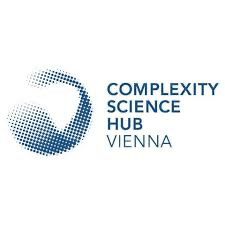Smart Communities and Technologies
The Research Cluster “Smart Communities and Technologies” (Smart CT) at TU Wien will provide the scientific underpinnings for next-generation complex smart city and communities infrastructures. Cities are ever-evolving, complex cyber physical systems of systems covering a magnitude of different areas. The initial concept of smart cities and communities started with cities utilizing communication technologies to deliver services to their citizens and evolved to using information technology to be smarter and more efficient about the utilization of their resources. In recent years however, information technology has changed significantly, and with it the resources and areas addressable by a smart city have broadened considerably. They now cover areas like smart buildings, smart products and production, smart traffic systems and roads, autonomous driving, smart grids for managing energy hubs and electric car utilization or urban environmental systems research.
Research aims
The central focus is on creating the scientific underpinnings for a future Internet of Cities infrastructure. This must consist of a comprehensive set of methodologies, models, and tools for development, design, management, and evolution of next-generation smart city applications.
Cyber-Physical-Human Ecosystem
- Enable open modeling and application environments that are able to seamlessly integrate real-world data into simulations from the physical environment at different stages during its lifecycle.
- Provide a comprehensive methodology to assist stakeholders in designing, developing, and evolving reusable and maintainable smart city applications. By doing enabling the design and development of reusable and independently maintainable application components in close cooperation with expert stakeholders.
- Provide a comprehensive middleware toolset to reliably operate and manage future smart city application, that will allow operators to seamlessly deploy and execute complex applications in an autonomic, repeatable, and observable way.
Model Building and Visual Analytics
- Conceptualize and design VA methods for particular users exploring and analyzing particular heterogeneous, multivariate (including spatial and temporal properties) data sets and performing particular tasks.
- Capture the quality and uncertainty of the data sets in scalable and interactive VA methods.
- Tackle unpredictable, unexpected, and unforeseeable events and patterns from the past, present, and future in the VA methods.
- Utilize VA methods to guide and steer model generation and usage to achieve better predictions.
- Support communication and interaction between the human and VA methods in a user appropriate way from a task-specific perspective.
3D-Spatialization
- Acquire 3D data in a smart city, based on different sources of input, at different times, including indoors.
- Capture the dynamic aspect of the data, i.e., detecting changes between different acquisitions.
- Spatial computation in the 3D smart city to derive new insights. This step can interact with sensor data obtained in traditional manners.
- Visualization of the 3D smart city in an efficient manner.
Project duration
2018 - ongoing
Research-team
- Alessio Arleo (Homepage)
- Schahram Dustdar (Homepage)
- Chao Jia (Homepage)
- Bernhard Kerbl (Homepage)
- Manfred Klaffenböck (Homepage)
- Roger A. Leite (Homepage)
- Silvia Miksch (Homepage)
- Ilir Murturi (Homepage)
- Johannes Sorger (Homepage)
- Christos Tsigkanos (Homepage)
- Michael Wimmer (Homepage)
Publications
- Schahram Dustdar and Ilir Murturi. Towards Distributed Edge-based Systems. 2nd IEEE International Conference on Cognitive Machine Intelligence, 2020.
- Ilir Murturi, Mohammadreza Barzegaran, and Schahram Dustdar. A decentralized approach for determining configurator placement in dynamic edge networks. 2nd IEEE International Conference on Cognitive Machine Intelligence, 2020.
- T. Pusztai, C. Tsigkanos, S. Dustdar. Engineering Heterogeneous Internet of Things Applications: From Models to Code. IEEE International Conference on Collaboration and Internet Computing (IEEE CIC), 2019.
- Fahed Alkhabbas, Ilir Murturi, Romina Spalazzese, Paul Davidsson, and Schahram Dustdar. A Goal-driven Approach for Deploying Self-adaptive IoT Systems. IEEE International Conference on Software Architecture (ICSA), 2020.
- Cosmin Avasalcai, Ilir Murturi, and Schahram Dustdar. Edge and Fog: A Survey, Use Cases, and Future Challenges. 2020.



